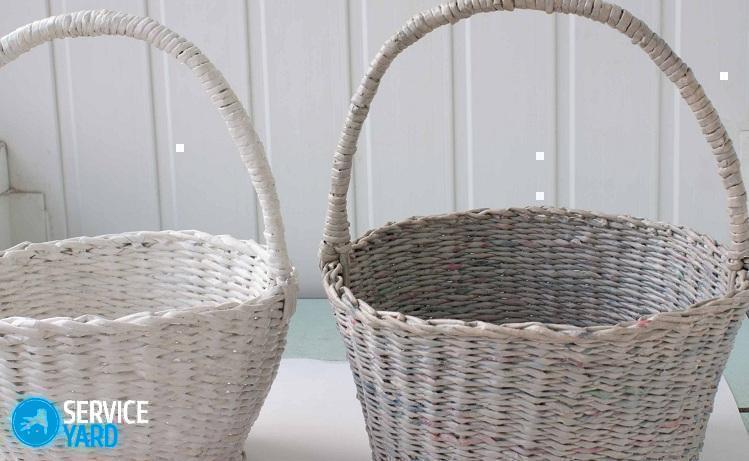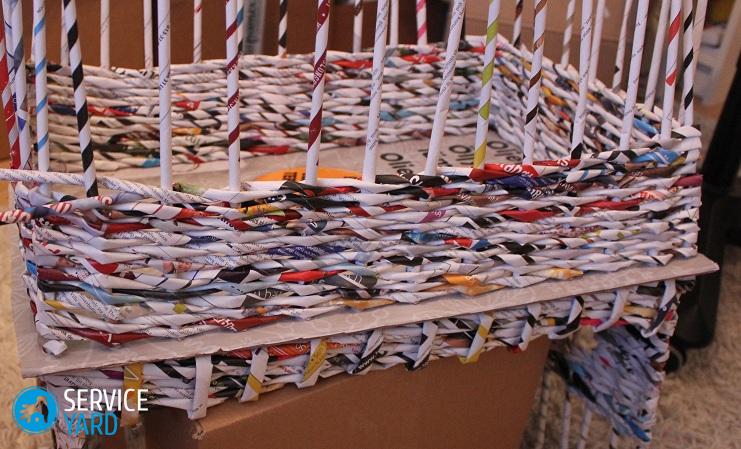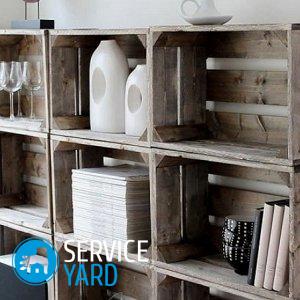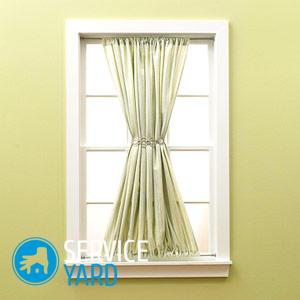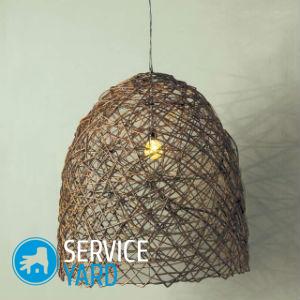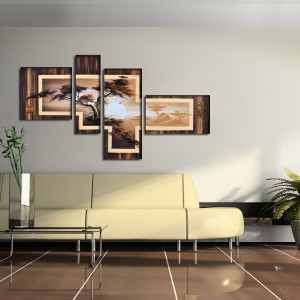Do-it-yourself furniture from newspaper tubes
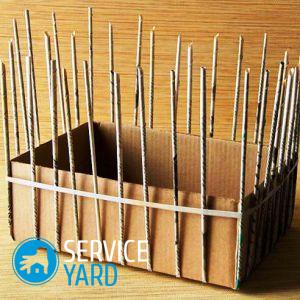
Surely, in every house there are many old and unnecessary magazines, newspapers and brochures with which you can melt the stove or which can be scrapped. And you can turn this raw material into wonderful furniture from newspaper tubes with your own hands. Yes, do not be surprised, old newspapers can serve as reliable and durable material for weaving items useful in everyday life. Probably everyone came across products that are woven from vines. They look very beautiful and airy, but it's not cheap. Therefore, we offer you some simple options that will help you master the technique of weaving from a rod, using cheaper and more affordable material.
to contents ↑What is necessary to create furniture from newspaper tubes?
First of all, you need to understand what you need to work, regardless of what kind of decor or furniture you are going to do. The list of materials includes the following:
- Newspapers (handouts, magazines).
- Scissors.
- Sheets of cardboard.
- Knife for cutting paper.
- Scissors.
- Scotch.
- Glue for paper.
- Varnish and stain for coating the finished product.
After the tools and materials have been prepared, you should decide which item from the newspaper tubes you will do.
Important! For a simple vase model, you can use a regular plastic bottle as a mold. But for some more complex designs, various items for the frame or temporary holder during operation may be required.
The first thing to do is to form paper tubes, which will serve as the vine for weaving. These paper tubes should be the same length and diameter, so it’s worth wrapping them on a pencil to get the optimal shape, pre-coating the paper with glue. Thanks to this, you will avoid spilling the tubes after the pencil is removed.
to contents ↑Important! From the outside it may seem that paper is not the most reliable material in order to make massive objects of a certain purpose out of it. However, in fact, do-it-yourself furniture from newspaper tubes is quite strong, durable, and if you follow all the rules in the manufacture, it will serve you for a long time.
How to make newspaper tubes?
In order for your articles from magazines and newspapers to be durable, they must be carefully crafted.
Important! For more complex structures that are designed to hold weights, for example, shelves, chairs, shelves, sofas, you need tubes of a higher density.
Operating procedure:
- Take the newspaper sheet and bend it along twice.
- Cut it so that you get four identical strips.
- To make a tube, take a knitting needle of the appropriate thickness and attach it to the corner of the strip at an angle of 30 degrees.
- Holding the edge, twist the tube.
- Reaching the middle, remove the spoke and tighten the tube, gluing the edges with glue.
If during the weaving process you will need to build up a tube, do not use glue for this. It is better to leave a gap of 2-3 cm - it will be enough to hold a new link. For example, when twisting large sheets of newspaper, the tube expands upward, which is suitable for building.
Since the paper is much softer than the vine, try, refueling the tubes at the end of weaving, fasten them with PVA on the product. Leave the work at night so that it dries out, and continue finishing in the morning.
Important! If you want nothing to distract you from weaving, prepare more paper vines in advance. Do not be afraid that there will be excess: to weave furniture from newspaper tubes with your own hands is so exciting that you will probably want to do some more things later.
For starters, it’s worth practicing on something simpler. For example, a small round tray will be an excellent opportunity to understand the intricacies of weaving from paper vines.
to contents ↑Paper tray
To make a tray, you need to prepare cardboard and newspaper tubes, as well as some form to support the structure during the weaving process.
Important! Also stock up on a decoupage napkin with your desired pattern and acrylic paint.
Operating procedure:
- From cardboard cut out three identical circles.
- Paint one of these circles with white acrylic paint. After complete drying, make a decoupage on it with the prepared napkin and set aside for a while.
- Draw a second circle into sectors of equal size. For more accurate calculations, use a protractor. For example, if you take an angle of 8 degrees for breaking, you get 45 rays. On top of them, stick the tubes, which will serve as the basis of the product.
- Then glue another cardboard circle over the base tubes. So you get the bottom of the tray.
- Take two tubes and weave them in the first row, clearly adhering to the edge of the cardboard base, so that the ends close well. Moving to the second row, lift the base tubes vertically. In this case, the frame for braiding is not needed, since the working tubes from which weaving started hold their shape well.
- Continue weaving the tray in either a simple technique or a more complex pattern, if such work is not new to you and you have already mastered some schemes.
- After your tray is completely gossip, cover it in two or three layers of varnish and, after it is completely dry, fix a cardboard circle with decoupage on the bottom.
Thus, by trying to weave newspaper tubes, you can make a functional and attractive interior element. If you liked this process, you can proceed to more complex options, for example, making a chair from newspaper tubes with your own hands.
to contents ↑Weaving a beautiful armchair
This is just that version of the decoupage of a simple plastic chair, which we talked about a little higher. To do this, you will need the following:
- The chair is made of plastic.
- Paper or newspaper tubes.
- Sheets of cardboard.
- Glue.
Let's get to work. For convenience, you can put the workpiece on the table. If you prefer to work on the floor, then you should lay a soft blanket under your feet, since weaving a chair can take a lot of time:
- Place a cardboard sheet under the stool and cut it to the desired size, forming the bottom of the future frame. Glue paper tubes parallel to each other on each side of the resulting shape, and at an angle of about 30 degrees on the bends.
- Place the chair evenly and lift the ducts - they will serve as racks. Now take four tubes, fix them on the base and braid the first row. Hide the two extra tubes inside, and weave two more rows with the remaining two.
- After the fourth row is completed, it is recommended to use two tubes at a time for weaving. By weaving several rows in this way, we can return to weaving using the “rope” technique. So the rack and the bottom of the chair are ready.
- Getting started on the seat. Weave it with one straw. For every fifth row, leave the working tube on the right side, and on the left - add a new one with a margin. So form the side posts.
- Braid the seat and base braids together with the “rope” technique from left to right.After that, hide the remaining tails from the seat inside, under the weave. Proceed to the back: it is woven from new tubules. After several separate rows are woven, braid the backrest around the chair. To narrow the armrest, take two racks at once - then one of them can be cut off.
- Weave the back, starting from the left, gluing the tips of the tubes to it and cutting off the excess. Inside, it will be necessary to reduce the width strictly in shape. On the armrest add two bent tubes and weave in a circle, bending the work stand on the right side under the right stand. Cut off the ends and glue them. To hide the arches of the back and armrests, weave the upper part until the lower and upper racks converge. Bend the edges, and cut off the excess.
- The chair is almost ready, it remains only to cover it with stain and varnish in several layers.
to contents ↑Important! In the same way, you can braid almost any furniture from newspaper tubes with your own hands, which has lost its attractive appearance, and it is a pity to throw it away.
Newspaper cat house
If you love cats, then, for sure, you are the owner of this furry and affectionate animal, and take care of your pet. Why not make a cute two-level house for him, in which your cat will feel comfortable? Moreover, this will require very little: newspaper tubes and cardboard.
First, pay attention to the size of your cat. The larger the animal, the denser the newspaper tubes and the bottom should be wider. Let's look at the standard size: the oval bottom is 35-40 cm, and the height of the first level of the house is 23 cm.
Operating procedure:
- Glue the tubes to the bottom at the same distance in the form of a sun. Lift them so that they form a wall and begin to braid. When weaving in each row, move a little of the base tube to each other so that the walls taper up.
- After 23 cm is completed, make a few more rows to form a straight stand of about 5 cm. A crossbar between the floors will be installed here. It must be braided in advance in the form of a circle, and the base tubes must protrude well beyond the working canvas in order to connect well with the base tubes of the first tier.
- Then braid the resulting compacted base in a circle, forming a semicircular basket from the inside.
to contents ↑Important! Since cats are active creatures, the house will need reinforcement. A solution of PVA glue and water in a ratio of one to one will help you with this. It will weight the resulting structure and make it more durable. After the house is completely dry, apply a stain on it, and then open it with varnish.
Stock footage
As you can see, it is not necessary to throw away waste paper that has accumulated in your home for a long time. From it you can make many useful things in everyday life, for example, a chair made of newspaper tubes with your own hands. Such products are beautiful and functional, and their manufacturing process is very exciting. Having done one thing, you will certainly want more and more.



